Sri Lanka being an island country comprises a wide range of landscapes, from pristine beaches to green canopied forests, and cold highlands – all of which provide a home for a plethora of exotic wildlife species.
Now if you are wondering exactly how many wildlife species – there are more than 500 individual animal species living in Sri Lanka, with the most notable being; leopards, elephants, water buffaloes, sloth bears, and endemic and migratory birds.
Visiting one of the many spectacular national parks in Sri Lanka, allows you the chance to view these incredible animals living in their natural habitat. So to help you organise your travels, we’ve created a list of the best national parks in Sri Lanka and which animals you could hope to see in them!
How Many National Parks Are In Sri Lanka?
Sri Lanka is home to an incredible wealth of biodiversity and wildlife. The country is home to 26 official national parks, all of which are filled with exotic and iconic animal species, some of which are endemic to the tropical island country.
1. Yala National Park: The Leopard Kingdom
At the heart of Sri Lanka’s wildlife conservation efforts, Yala National Park stands out as a beacon of biodiversity. Sprawling across the southeast coast, Yala’s terrain is a dramatic canvas of light and shadow, where ancient forests give way to grassy plains and salty lagoons. The park is a haven for the elusive Sri Lankan leopard, making it one of the best places in the world for sightings of these magnificent predators in their natural habitat. Yala’s allure doesn’t stop at leopards; it’s a sanctuary for elephants, crocodiles, and a myriad of bird species, painting a vibrant picture of life in the wild.
Visitors to Yala are greeted by a landscape that changes with the turn of every trail. Safari jeeps traverse these paths, offering glimpses into the lives of the park’s inhabitants. The thrill of spotting a leopard lounging in the shade or elephants ambling along the waterholes is unparalleled.
The park’s commitment to conservation is evident in the careful balance maintained between human curiosity and the well-being of wildlife. Yala is not just a destination; it’s an experience that etches itself into the heart of every traveler, urging them to return to its wild embrace.
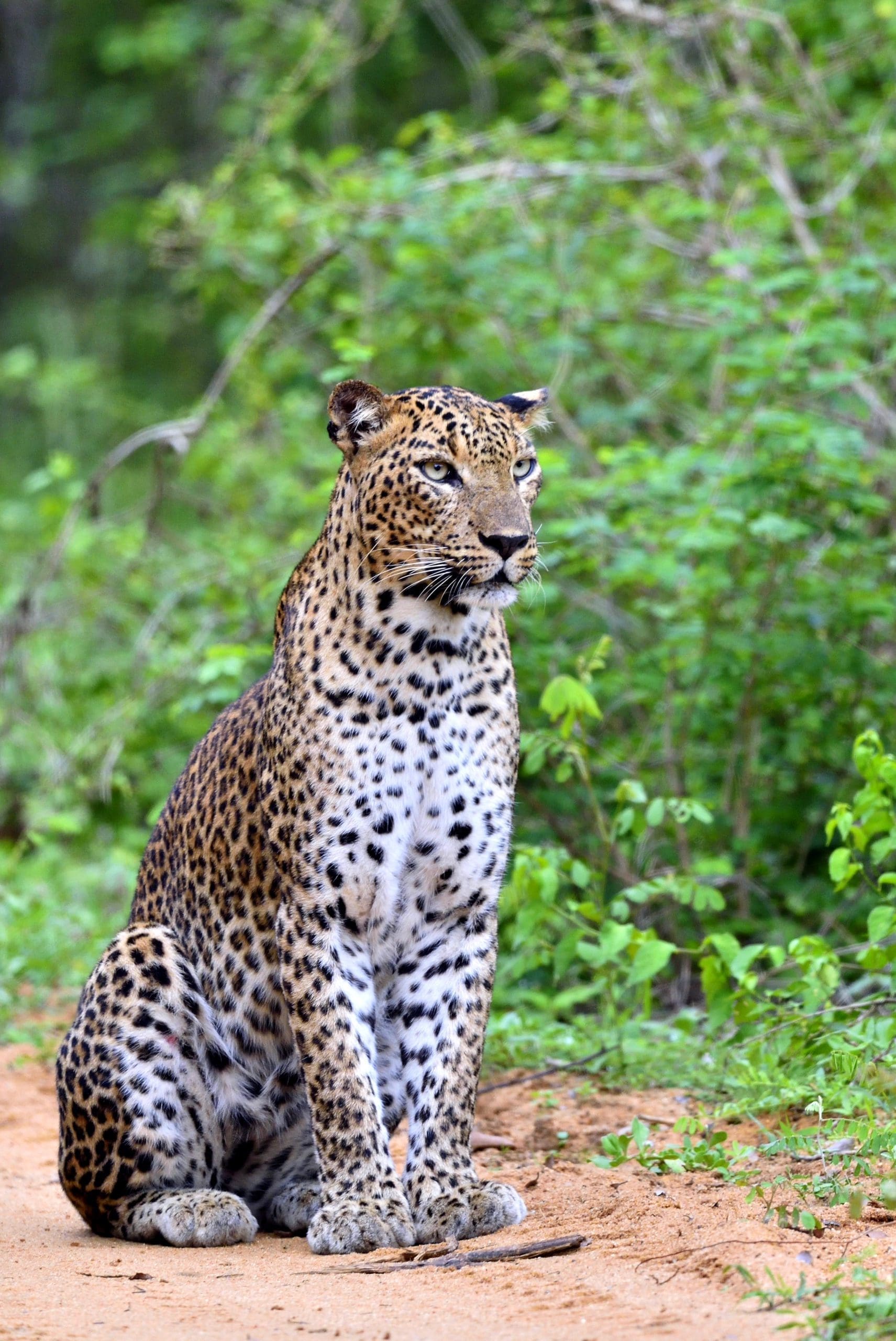
2. Udawalawe National Park: The Elephant Haven
Perched at the crossroads of Sri Lanka’s Sabaragamuwa and Uva provinces, Udawalawe National Park stands as a vibrant showcase of the island’s ecological diversity. Established as a refuge for animals uprooted by the creation of the Udawalawe Reservoir, this park has become a premier spot for witnessing Asian elephants roam freely in their natural setting. Its sprawling grasslands and undulating terrains make it an ideal place for observing these majestic creatures as they meander in search of sustenance and water.
Udawalawe offers more than your average safari; it’s an immersive experience into the heart of wildlife preservation. The park is home to the Elephant Transit Home, a rehabilitation center for orphaned elephant calves, offering a glimpse into the vital work of animal conservation.
Embarking on a safari here promises a journey through a living tapestry of fauna, beyond the magnificent elephants. It’s an opportunity to encounter a variety of species, from the stealthy leopard to the myriad of birds that streak the sky, making Udawalawe a symphony of wildlife and nature’s resilience.

READ NEXT: 12 EPIC THINGS TO DO IN SRI LANKA
3. Minneriya National Park: The Gathering Place
As we journey further into the heart of Sri Lanka, Minneriya National Park emerges as a scene straight out of an ancient past, where nature reigns supreme. Famous for hosting “The Gathering,” the largest assembly of Asian elephants anywhere in the world, Minneriya becomes a stage for a spectacular natural event during the dry season.
As water sources dwindle, elephants from across the region converge on the shores of the Minneriya Reservoir, creating a breathtaking spectacle of nature’s grandeur.
But Minneriya’s charm is not confined to this annual event. The park’s forests, scrublands, and wetlands provide a sanctuary for a diverse array of wildlife, including sambar deer, leopards, and numerous bird species.
A safari through Minneriya is a journey through time, a chance to witness the timeless dance of nature that has played out across these lands for centuries. The park offers a serene escape from the hustle and bustle of daily life, inviting visitors to immerse themselves in the tranquility of the natural world.
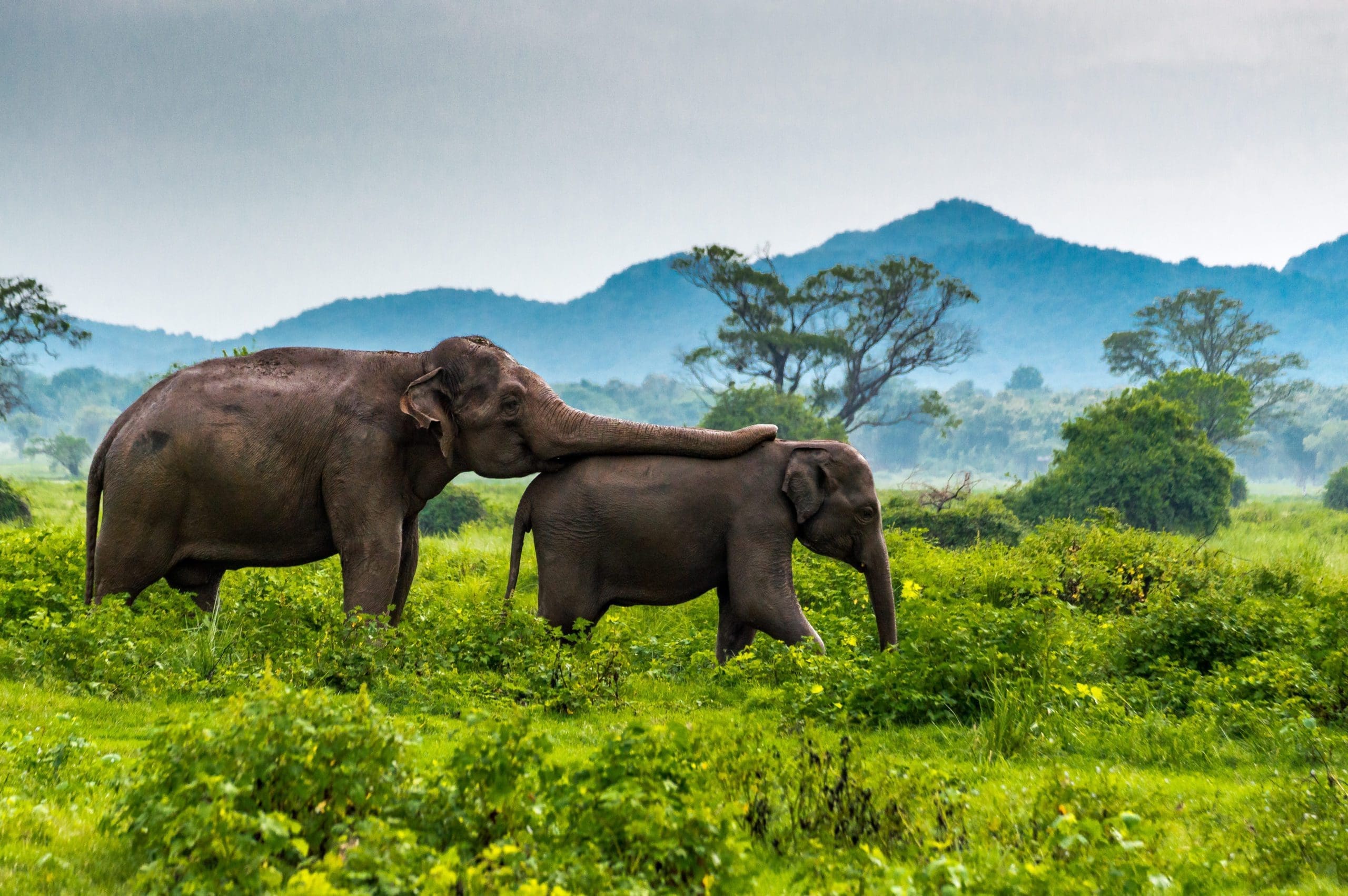
READ NEXT: THE BEST TIME OF YEAR TO VISIT SRI LANKA
4. Kaudulla National Park: A Migratory Haven
Just a stone’s throw away from Minneriya, Kaudulla National Park is often considered its sister park, sharing many of the same ecological features and wildlife. Established as a national park in 2002 to provide a corridor for elephants migrating between Minneriya and Somawathiya National Parks, Kaudulla is a relatively recent addition to Sri Lanka’s conservation efforts.
However, it has quickly become a focal point for those wishing to witness the grandeur of elephants in their natural setting, especially during the dry season when the Kaudulla reservoir becomes a magnet for herds seeking water and fodder.
Kaudulla is not just about elephants; it is a sanctuary for a wide range of fauna, including sambar deer, leopards, and an impressive variety of bird species, making it a birdwatcher’s paradise. The park’s lush foliage and tranquil waters offer a serene escape into nature, where the only sounds are the call of the wild.
Safaris in Kaudulla provide an intimate glimpse into the lives of the park’s inhabitants, offering moments of awe and wonder that linger long after the journey ends.
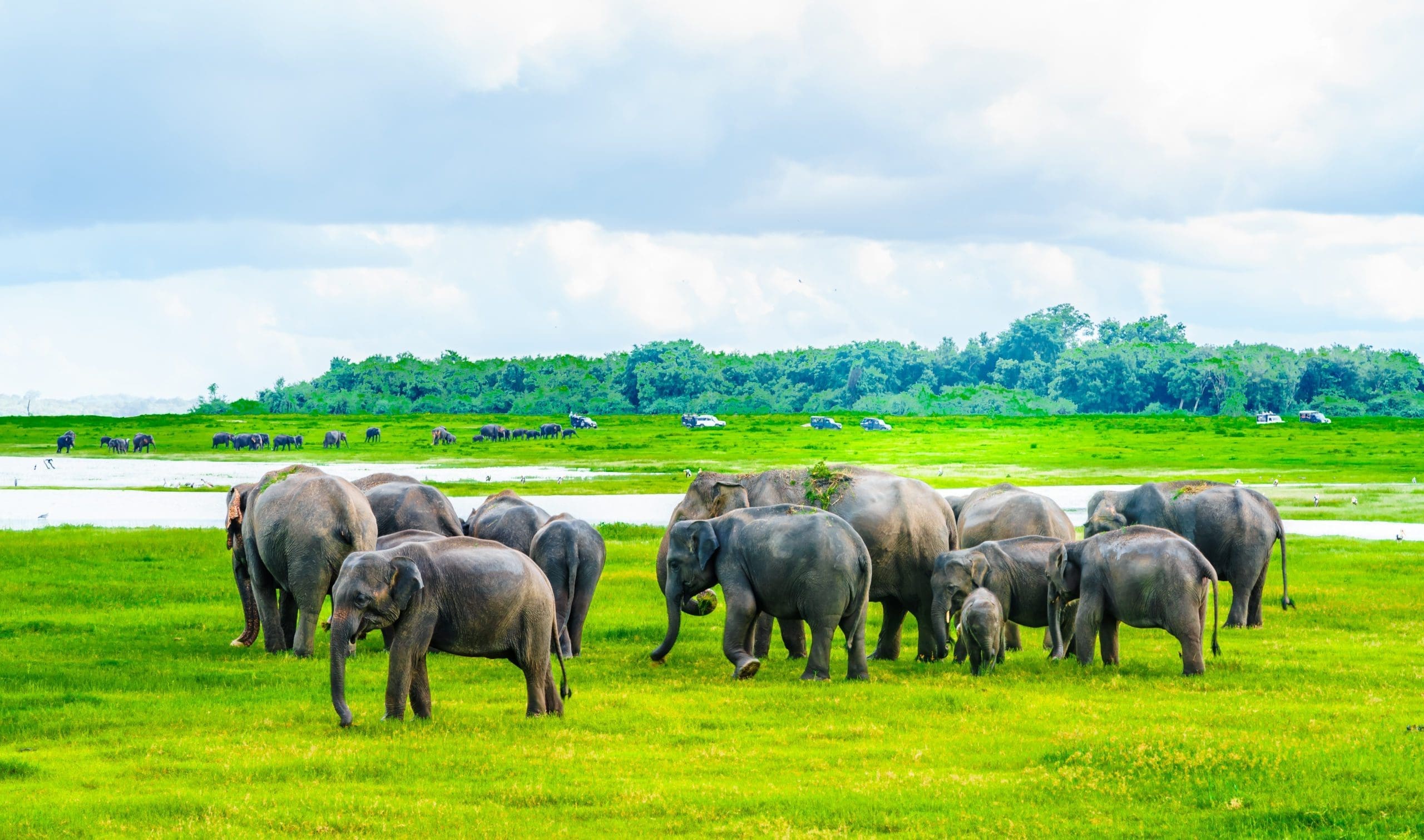
5. Bundala National Park: A Birdwatcher’s Dream
Heading down to the southern edge of Sri Lanka, you’ll find yourself in Bundala National Park, a landscape where the earth morphs into an exotic tapestry of salty lagoons, prickly scrubland, and golden beaches. Recognized as a UNESCO Biosphere Reserve, Bundala is a paradise for bird enthusiasts, home to a dazzling array of avian life. Here, flamingos streak the sky with shades of pink, and countless bird species make this their sanctuary, particularly during the wet seasons.
The park’s importance as a haven for birds, including the spectacle of greater flamingos flocking here in large numbers, is unparalleled. Yet, Bundala’s rich tapestry of life isn’t limited to its avian residents. It also serves as a sanctuary for leopards, elephants, crocodiles, and the sea turtles that come ashore to nest.
Exploring Bundala is an adventure where land and sea converge, creating a unique ecosystem where wildlife flourishes amidst the ebb and flow of the ocean’s tides. Each visit peels back layers, uncovering new wonders and showcasing the raw, unfiltered beauty of the natural world.

6. Wilpattu National Park: The Land of Lakes
Wilpattu National Park, the largest national park in Sri Lanka, is renowned for its unique feature: the “willus,” or natural lakes, that dot the landscape. These sand-rimmed water basins collect rainwater, creating habitats that support a wide range of biodiversity. Wilpattu is a realm of dense forests and open grasslands, where the elusive leopard roams alongside sloth bears, elephants, and countless bird species.
The allure of Wilpattu lies in its untouched wilderness, offering a sense of solitude and connection with nature that is increasingly rare. The park’s network of gravel tracks winds through a mosaic of habitats, providing visitors with the chance to delve deep into the heart of Sri Lanka’s wilds.
Safaris in Wilpattu are an adventure into the unknown, where each turn can reveal the wonders of the natural world, from a basking crocodile to the graceful leap of a spotted deer. It’s a place where the stories of the wild are written in the tracks on the ground and the call of the birds in the air.

7. Gal Oya National Park: A Sanctuary of Water
Gal Oya National Park, embracing the largest reservoir in Sri Lanka, Gal Oya, introduces a unique perspective on wildlife observation—by boat.
his unique vantage point allows for peaceful encounters with nature, as visitors can watch elephants majestically swim from island to island and witness aquatic birds erupt into flight at the slightest ripple.
Gal Oya stands apart from its busier counterparts, offering a tranquil refuge for those looking to immerse themselves in nature’s quiet beauty. Its dense forests and vast waters harbor an array of wildlife, including the secretive leopard, ensuring that each boat safari is a thrilling voyage of discovery.
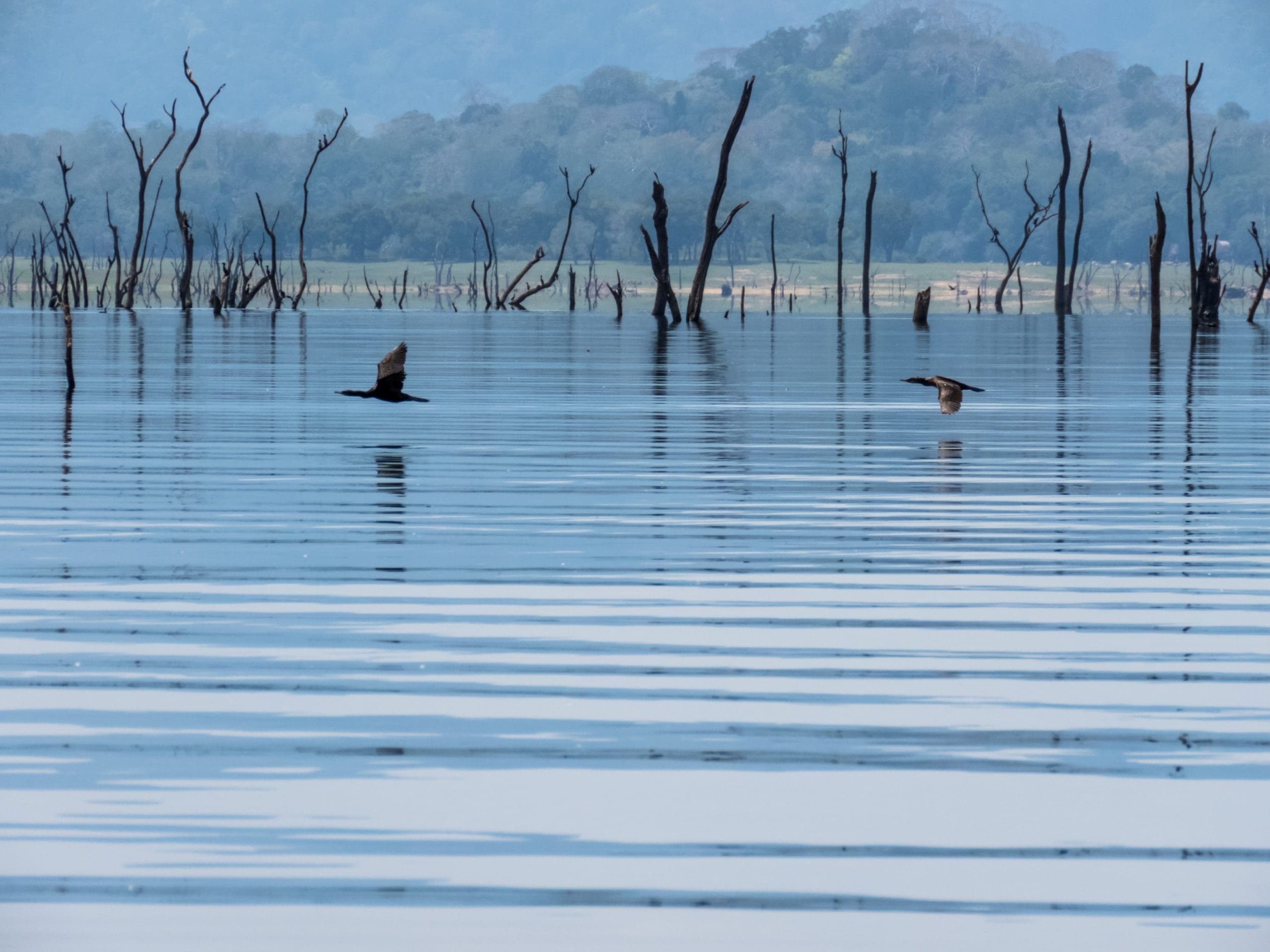
8. Horton Plains National Park: The Misty Plateau
Horton Plains National Park, perched on the central highlands of Sri Lanka, is a world apart. This elevated plateau at an altitude of over 2,000 meters is shrouded in mist and rich in biodiversity. It’s famous for the World’s End, a sheer cliff with a dramatic 880-meter drop offering panoramic views of the surrounding mountains and valleys.
The park’s unique montane forests and grasslands are home to many endemic species, including the Sri Lankan sambar deer and the Horton Plains slender loris.
Horton Plains invites hikers to explore its trails, which wander through this otherworldly landscape, where the silence is only broken by the call of birds and the rustle of leaves in the wind.
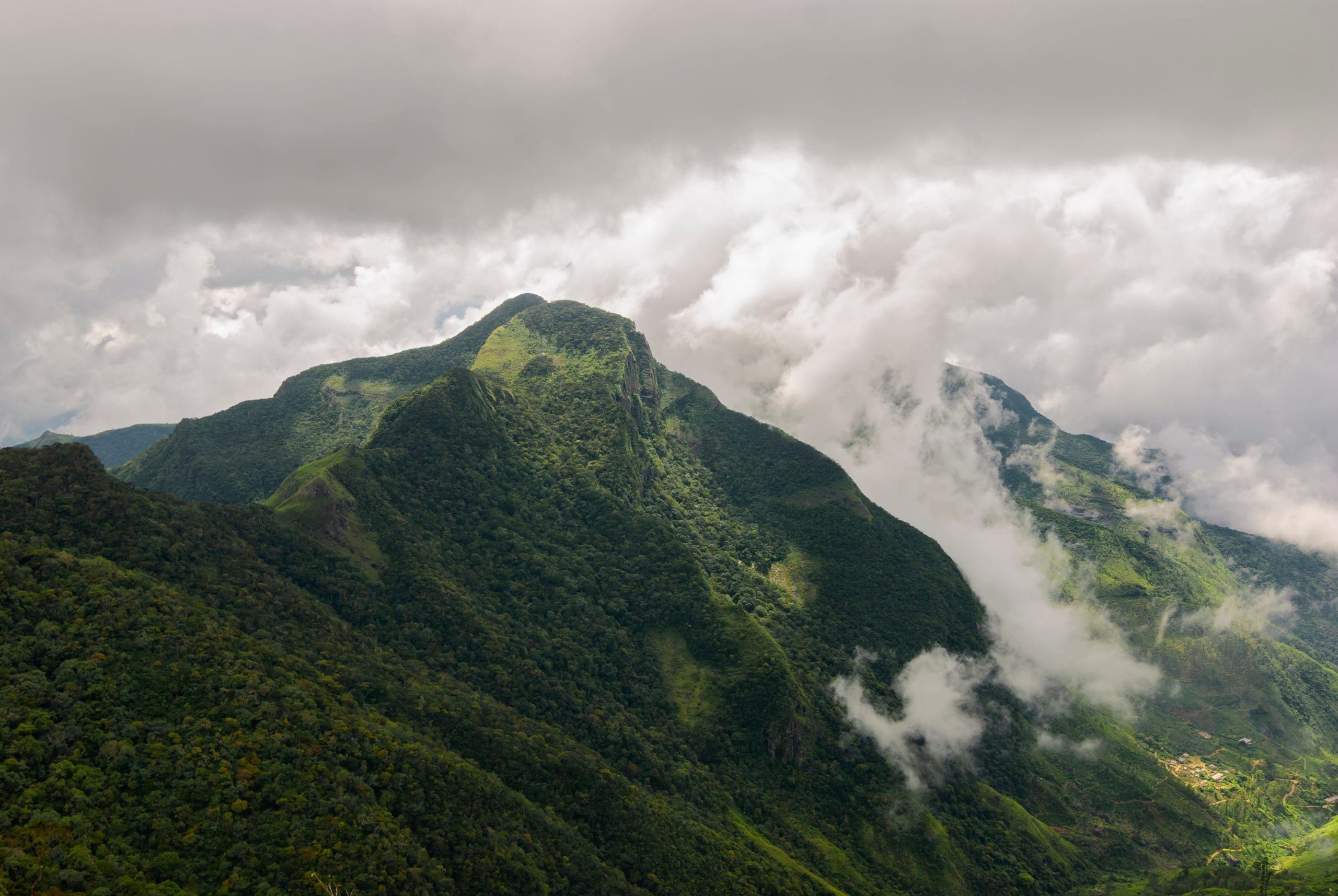
9. Kumana National Park: The Birding Paradise
Previously known as Yala East, Kumana National Park is renowned for its avifauna, particularly its large flocks of migratory waterbirds that visit the Kumana Villu, a 200-hectare natural swamp lake, annually. The park’s extensive wetlands make it a birdwatcher’s dream, with sightings of rare and endemic species such as the black-necked stork and the Eurasian spoonbill.
But Kumana is not just for bird enthusiasts; its mangroves, forests, and lagoons provide a sanctuary for a wide range of wildlife, including elephants, leopards, and crocodiles, making it a comprehensive snapshot of Sri Lanka’s diverse ecosystems.

10. Wasgamuwa National Park: Where Bears and Elephants Roam
Situated away from the usual tourist routes, Wasgamuwa National Park offers a wild safari experience in the heart of Sri Lanka. The park is known for its significant populations of Sri Lankan elephants and the rare sighting of the sloth bear. Its varied ecosystems, from dry zone forests to riverine habitats, support a rich diversity of flora and fauna, including over 150 bird species.
Wasgamuwa is a testament to the resilience of nature, offering visitors a chance to explore the untamed beauty of Sri Lanka’s wilderness. The park’s commitment to conservation and its role in the cultural history of the island, highlighted by ancient ruins within its boundaries, add layers of depth to the visitor experience.
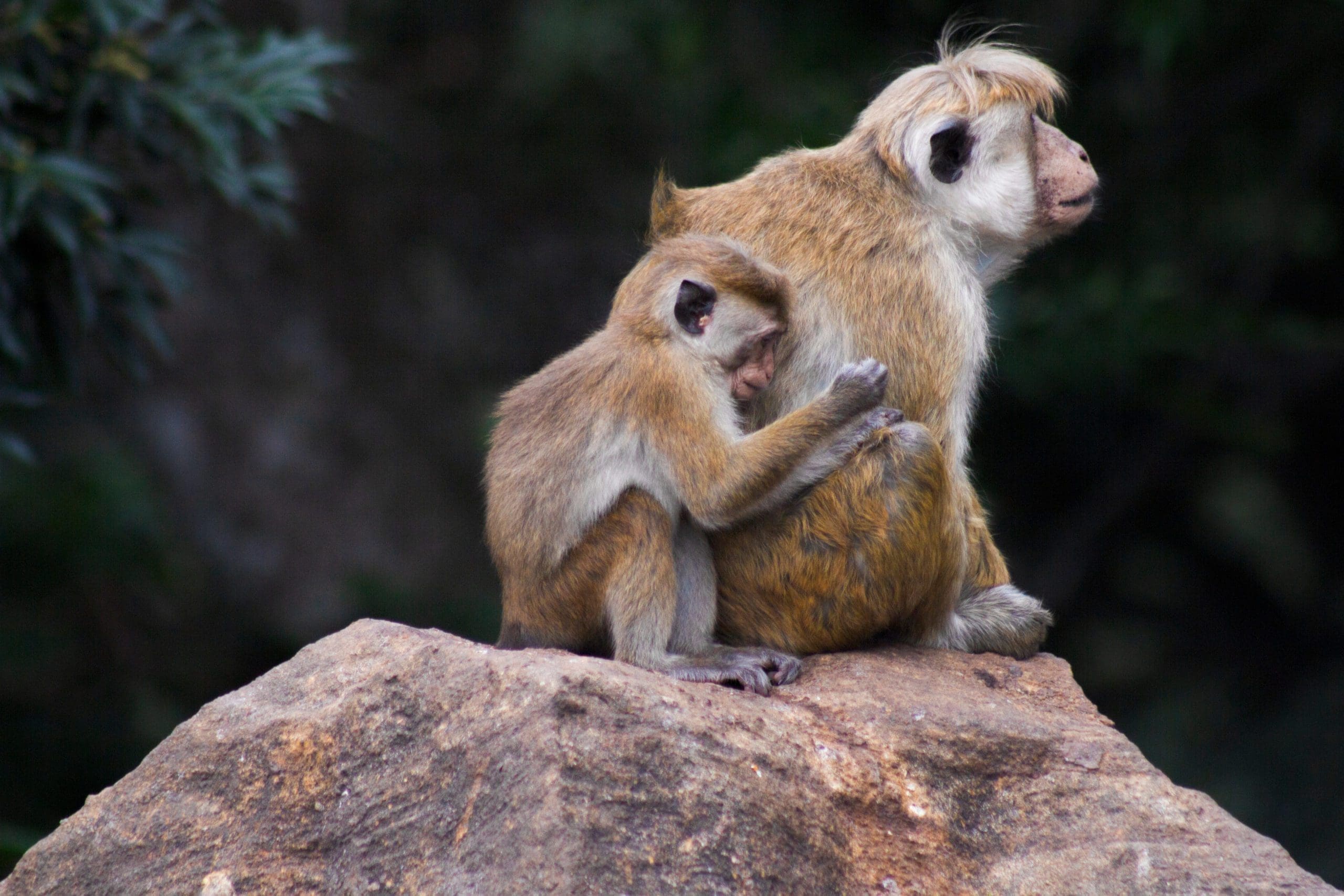
11. Sinharaja Forest Reserve: The Primordial Rainforest
Sinharaja Forest Reserve, a UNESCO World Heritage Site, stands as a bastion of biodiversity in Sri Lanka. This lowland rainforest, dense and teeming with life, is a treasure trove of endemic species, including trees, insects, amphibians, reptiles, birds, and mammals.
Walking through Sinharaja is like stepping back in time, with its ancient trees towering overhead and the sounds of the forest enveloping you in a natural symphony. The reserve is particularly famed for its birdlife, with mixed-species feeding flocks offering an unparalleled avian spectacle.
The importance of Sinharaja extends beyond its biodiversity; it’s a crucial catchment area for many of Sri Lanka’s rivers, highlighting the interconnectedness of ecosystems and the need for their protection.
12. Maduru Oya National Park: A Haven of History and Nature
Situated as a key piece of the Mahaweli development project, Maduru Oya National Park is a testament to Sri Lanka’s deep-seated cultural roots and breathtaking natural landscapes. It boasts ancient reservoirs, crafted by early civilizations, which highlight the advanced agricultural techniques and environmental understanding of our ancestors.
Nestled among the wilderness, these historical reservoirs offer visitors a rare glimpse into the seamless integration of culture and nature. Maduru Oya is a sanctuary for diverse ecosystems, providing a habitat for elephants, leopards, and the unique toque macaque, underscoring its importance for both ecological preservation and educational insight.
For those drawn to the path less traveled, Maduru Oya offers a tranquil retreat into the heart of nature, where the whispers of the past meet the untamed beauty of the wild.
Planning Your Visit
Visiting Sri Lanka’s national parks requires preparation and respect for the natural and cultural landscapes you’ll be exploring. Whether planning safaris, hikes, or birdwatching excursions, consider the best times to visit each park to maximize wildlife sightings and scenic views.
Engaging with local guides not only enriches your experience but also supports the communities that steward these lands. Remember to tread lightly, leaving no trace and taking only memories and photographs.
